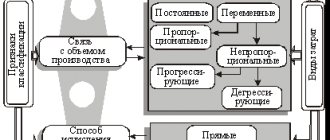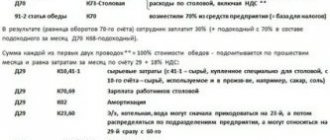What is additional capital?
According to PBU, additional capital is part of the organization’s sources, which constitute the amount of increase in the value of assets for reasons independent of its activities. Some positive differences that are not directly related to business activities are written off as part of additional capital. This usually includes the following amounts:
- revaluation of fixed assets and other property;
- share premium;
- exchange rate differences;
- other income of this type.
Additional capital is not divided into shares, like, for example, authorized capital. Its amount is considered the common property of all investors and the enterprise as a whole. Information about it is accumulated on the account. 83, which is included in the group of capital accounts.
Reflection of other cases of use of additional capital on account 83
The situations related to changes in the company’s additional capital, including as a result of the revaluation of fixed assets, were listed above.
In relation to non-current assets, one more point is also important. By virtue of clause 15 of PBU 6/01, if an asset is disposed of, then the amount of the remaining revaluation for it should be attributed to retained earnings. Therefore, if for some reason (sale, liquidation, transfer as a contribution to the authorized capital, etc.) the fixed assets in the company are disposed of, the accounting must reflect the operation to reduce additional capital by the amount of the additional valuation for such fixed assets:
Dt 83 Kt 84.
Please pay attention! Additional capital can be written off as profit only if the asset has been disposed of. Therefore, if a non-current asset is fully depreciated, but not disposed of, additional capital should not be written off. After all, a company can always modernize or reconstruct such an OS object, which will increase its value, which means that such a new value will have to be re-evaluated again.
Additional capital can be used to increase the authorized capital. This follows from the Law “On JSC” dated December 26, 1995 No. 208-FZ and the Law “On LLC” dated February 8, 1998 No. 14-FZ, which allow increasing the authorized capital of a company at the expense of its own funds. In accounting, the corresponding transaction is reflected by the accounting entry:
Dt 83 Kt 80.
In addition to the above methods of spending additional capital, it can be partially or fully distributed among shareholders (owners). Such an accounting transaction is reflected by the following accounting entry:
Dt 83 Kt 75.
Please pay attention! The above entry reflects the formation of the organization's debt to the owners in accounting.
The actual payment of funds to the founders from additional capital will subsequently be recorded in successive entries:
Dt 75 Kt 51 (in terms of basic amounts paid to owners),
Dt 75 Kt 68 (personal income tax withholding).
In practice, a controversial question arises: is it possible to use additional capital to cover losses of previous years? Currently the law does not prohibit this. The regulatory authorities believe that losses cannot be compensated only by the amounts of additional valuation of fixed assets, but at the same time they note that the Tax Code does not provide for sanctions for this (letter of the Ministry of Finance of the Russian Federation dated July 21, 2000 No. 04-02-05/2). Therefore, we can assume that companies are not yet deprived of the right to use their additional capital to cover losses. To do this, you need to reflect the following entry in accounting:
Dt 83 Kt 84.
Application of account 83
A particular accounting account should be used according to its purpose. Incorrect reporting of information can have serious consequences. Account 83 “Additional capital” is intended to record amounts that are added to the amount of additional capital or written off from it. Due to the fact that capital is the source of the enterprise, and data about it is displayed in the liability side of the balance sheet, the account has a passive structure.
It is recommended to reflect the following amounts in the credit of account 83:
- an increase in the value of property that was identified as a result of its revaluation;
- the difference between the actual value of shares and their par value, formed as a result of their sale at a value exceeding their par value, in correspondence with the account. 75;
- differences in currency transactions that arose during settlements with the founders of the organization in correspondence with the account. 75;
- the amount of additional contribution to the property by the shareholder;
- the cost of the property received, if the receipt is related to targeted financing;
- the amount of retained earnings written off to additional capital (from account 84).
Formation of additional capital due to the increase in the value of non-current assets
The procedure for the formation of additional capital as a result of an increase in the value of fixed assets is established by PBU 6/01 “Accounting for fixed assets ”. According to para. 5 clause 15 PBU 6/01 the amount of revaluation of an item of fixed assets as a result of revaluation is credited to additional capital, with the exception of the following case.
If the amount of revaluation of an item of fixed assets is equal to the amount of its depreciation carried out in previous reporting periods and attributed to the financial result as other expenses, then it (revaluation) is credited to the financial result as other income. The change in the initial value during the revaluation of the corresponding objects is reflected in the debit of account 01 “Fixed assets” in correspondence with account 83 “Additional capital”. At the same time, depreciation is subject to proportional change by accounting entry to the debit of account 83 “Additional capital” and the credit of account 02 “Depreciation of fixed assets.”
Example 1
The company is revaluing fixed assets, the result of which is reflected in accounting as of 01/01/2014. Previously, the property was not revalued. Without taking into account revaluation, the initial cost of the object is 76,271.19 rubles, depreciation is 24,843.20 rubles. The amount of additional valuation on account 01 “Fixed assets” is 13,728.81 rubles, on account 02 “Depreciation of fixed assets”, respectively, 4,471.77 rubles.
The following entries will be made in accounting:
| Contents of operation | Debit | Credit | Amount, rub. |
| 31.12.2013 | |||
| Reflects the amount of revaluation of fixed assets | 01 | 83 | 13 728,81 |
| The difference between the amount of recalculated depreciation and the amount of accumulated depreciation is reflected | 83 | 02 | 4 471,77 |
Example 2
An enterprise revaluates an item of fixed assets, the result of which is reflected in accounting as of 01/01/2014. Previously, the object was subject to revaluation by marking it down with attribution to the financial result: in account 01 “Fixed assets” - 14,854.04 rubles, in account 02 “Depreciation of fixed assets” - 2,970.81 rubles. Without taking into account the second revaluation, the replacement cost of the object is 143,226.73 rubles, depreciation is 28,645.37 rubles. According to the revaluation statement as of 01/01/2014, the amount of revaluation in account 01 “Fixed assets” is 18,984.71 rubles, in account 02 “Depreciation of fixed assets”, respectively, 3,796.95 rubles.
The following entries will be made in accounting:
| Contents of operation | Debit | Credit | Amount, rub. |
| 31.12.2013 | |||
| The amount of revaluation of the fixed asset object is reflected within the limits of the previously made depreciation | 01 | 91-1 | 14 854,04 |
| The difference between the amount of recalculated depreciation and the amount of accumulated depreciation within the previously made markdown is reflected | 91-2 | 02 | 2 970,81 |
| The amount of revaluation of the fixed asset item in excess of the previously made depreciation is reflected (18,984.71 - 14,854.04) rubles. | 01 | 83 | 4 130,67 |
| The difference between the amount of recalculated depreciation and the amount of accumulated depreciation in excess of the markdown is reflected (3,796.95 - 2,970.81) rubles. | 83 | 02 | 826,14 |
Debit transactions
Typically, amounts credited to account 83 are not debited. But there are a number of cases in which debit entries are made:
- repayment of the decreased value of property as a result of its revaluation;
- directing amounts of additional capital to increase the authorized capital;
- distribution between shareholders (founders) of the amounts accumulated in the account;
- directing funds to pay for uncovered losses.
Such operations are rare, but they do happen. Possible correspondence of accounts confirms the statement that additional capital is part of the enterprise’s own capital. Its amount can cover certain types of losses that arise for reasons beyond the organization’s activities, or combine it with the authorized capital.
Accounting for reserve capital (account 82)
Reserve capital is one of the components of an enterprise’s own capital, along with authorized and additional capital. Reserve capital is formed on account 82, with a loan the reserve capital is formed and increased, with a debit it is reduced (used).
Reserve capital is not formed by all organizations; many enterprises do without reserves, but in some cases it is required to be formed. In particular, joint-stock companies must reserve funds, but other organizations create reserves at their own discretion, in accordance with their constituent documents and accounting policies adopted by the organization.
Reserve funds can be spent on possible unforeseen expenses that may arise during the operation of the enterprise. JSCs can use these funds to buy back their own shares.
Reserve capital consists primarily of a reserve fund. In addition, it may include other funds, for example, a special fund for the corporatization of employees, a special fund for the payment of dividends on preferred shares. The composition of the reserve capital is prescribed in the company's charter.
The procedure for forming reserve capital
A reserve is formed at the beginning of the year, when the net profit received for the year is distributed. At the end of the year, a meeting of the founders is held, at which the reporting date is approved, various decisions are made, net profit for the year is distributed, including a decision on the creation or replenishment of reserve capital.
The amount of reserve capital for joint stock companies has a minimum limit, which cannot be lower - 5% of the authorized capital. The actual amount of the reserve is established by each organization independently (taking into account the minimum limit). The amount of reserve capital is specified in the constituent documents. All other organizations can create reserve capital of any size; there are no restrictions in this case.
Thus, at the beginning of the year, funds from net profit can be spent to replenish reserve capital. Replenishment occurs up to the amount specified in the company's charter.
A reserve is formed on account 82 “Reserve capital”. At the same time, you can not use a separate account 82, but create a reserve directly in account 84 Retained earnings (uncovered loss) separately in a separate subaccount.
Postings to account 82:
D84 K82 – replenishment of reserve capital with funds from net profit received during the reporting year.
D82 K84 – reserve funds cover losses incurred during the year.
Analytical accounting
Analytical accounting for the additional capital account is carried out based on the use of accumulated funds and the nature of their receipts. Journal-order No. 12 contains detailed summary information about its credit turnover with an indication of the corresponding accounts. The instructions for using accounts do not contain information about which subaccounts should be opened in the context of 83 accounts. This point should be decided by the accounting policy of a single organization.
In general, the following subaccounts can be created:
- 83/1 – “Increase in property value”;
- 83/2 – “Equity income”;
- 83/3 – “Differences in exchange rates.”
This is not a complete list, but it describes frequently occurring situations that affect account 83 in accounting. It should be remembered that analytical accounting is carried out in such a way that later, on its basis, data can be entered into the annual reporting form No. 3.
Examples of typical business transactions and postings for account 83
Example No. 1. Reducing the amount of additional capital by the amount of retired fixed assets
Let's say an organization has written off an operating system - an electric pump unit, with a replacement cost of 800,000 rubles. and accumulated depreciation of 800,000 rubles. The revaluation of the object was carried out as of 07/01/2017. According to analytical accounting data, 83 accounts - the additional valuation of the object as a result of revaluation amounted to 130,000 rubles.
Postings to account 83 made in accounting:
| Dt | CT | Amount, rub. | Wiring Description | Document |
| 02 | 01 | 800 000 | The unit is written off | Act on decommissioning of an asset |
| 83 | 84 | 130 000 | The amount of additional valuation of the retired unit is written off | Accounting information |
Example No. 2. Reflection in accounting of transactions on revaluation of fixed assets related to additional capital
Suppose, according to its accounting policy, an organization regularly revaluates administrative buildings listed on its balance sheet at the current (replacement) cost at the end of the reporting year. The assessment is carried out by an independent appraiser.
Table of revaluation data as of December 31 of the reporting year:
| OS groups | Current (restorative) Cost, rub. | Depreciation growing total, rub. | Revaluation, rub. | |
| OS | Depreciation of fixed assets | |||
| Administrative buildings | 12 000 000 | 600 000 | 400 0000 | 200 000 |
Postings to account 83 made in accounting:
| Dt | CT | Amount, rub. | Wiring Description | Document |
| 01 | 83 | 4 000 000 | Revaluation of administrative buildings | Accounting certificate-calculation, asset inventory card |
| 83 | 02 | 200 000 | Overestimation of depreciation | Accounting certificate-calculation, asset inventory card |
Example No. 3. Formation of additional capital due to exchange rate differences
Let's assume that the sole founder of the LLC is a Swedish company. The authorized capital is RUB 1,178,790. The LLC registration certificate is dated 12/20/1015. Receipt to the LLC's foreign currency account - 01/20/2016. in the amount of SEK 15,000.
Postings to account 83 made in accounting:
| Dt | CT | Amount, rub. | Wiring Description | Document |
| In December 2015 | ||||
| 75 | 80 | 1 178 790 | Debt of the founder on contribution to the management company | LLC Charter |
| In January 2016 Swedish krona exchange rate on the date of receipt of payment 01/20/2016. — 80.0744 rub. | ||||
| 52 | 75 | 1 201 116 | Swedish kronor was credited to the foreign currency account | Bank statement for foreign currency account (15000*80.0744) |
| 75 | 83 | 22 326 | Exchange rate differences on deposits in the management company | Accounting certificate-calculation (1 201 116 - 1 178 790) |
Results of asset revaluation
One of the first situations leading to the emergence of a relationship between the credit or debit of account 83 and the accounts of non-current assets is the result of the revaluation of the enterprise’s property. Let us remember that this category of assets includes fixed assets, intangible assets and unfinished construction. Revaluation of property is carried out maximum once a year by recalculating its residual value. The data is reflected in the balance sheet at the beginning of the annual reporting period.
It is worth considering that the revaluation amount is always written off to the credit of 83 accounts. But the markdown amounts can be indicated in debit 83 only if the opposite situation took place before. In other words, from the amounts of additional capital, only that negative difference in the revaluation of assets, which was previously attributed to account 83 as a positive difference, is repaid. In another case, the markdown is reflected in the part of the uncovered loss.
Its use
The purposes for which additional capital can be spent are limited by law. These include:
- Repayment of the negative difference between the value of fixed assets or intangible assets before and after the revaluation. The negative result of the revaluation of fixed assets can be repaid using the additional fund only if it was formed by increasing the value based on the results of a previous similar procedure for the same objects. Write-off of a negative difference is possible only in an amount not exceeding the amount of the revaluation. The accounting regulations oblige enterprises to maintain analytical accounting for each fixed asset subject to revaluation. When one of the objects is disposed of, the funds generated as a result of revaluation are included in the financial result and form retained earnings or uncovered losses. Such a business transaction can be performed only upon disposal, since complete depreciation will not entail changes in additional resources.
- Transfer of funds to increase the size of the authorized capital. The allocation of additional funds reflected in the balance on account 83 to increase the authorized capital is not regulated by law. In theory, the organization has the right to use all additional capital. In practice, its full use is not economically feasible, since the amounts generated as a result of revaluation can no longer be spent on repaying the negative difference in revaluation of fixed assets and will have to be covered from net profit.
- Distribution of additional funds between participants. Distribution among the founders is possible in the event of liquidation of the organization. The legality of this procedure for an operating enterprise may raise questions from regulatory authorities.
- Another area not regulated by modern legislation is the repayment of losses from past periods. Such a business transaction will not be considered a violation, but then the taxpayer will lose the right to recover losses from previous years through attribution to expenses when calculating the organization’s income tax.
Postings based on the results of property revaluation
The process of assessing non-current assets, which directly affects the amount of additional capital, is reflected in the following types of entries:
- Dt "OS" ("NMA") Kt "Additional capital" - as a result of revaluation, the value of the asset increased, the revaluation is reflected in additional capital.
- Dt “Additional capital” Ct “Depreciation of fixed assets” (“Depreciation of intangible assets”) – is registered simultaneously with the first account assignment. Characterizes the amount of depreciation adjustment accrued for the revalued property.
- DT “Additional capital” CT “OS” (“IMA”) – amounts are written off to cover the depreciation of the asset (no more than the amount of the previously made revaluation).
- DT “Depreciation of fixed assets” (“Depreciation of intangible assets”) CT “Additional capital” – the amount of depreciation when depreciating property is adjusted (simultaneously with posting No. 3).
Let's consider a small example: as a result of the revaluation of non-current assets, an object worth 150 thousand rubles was identified, subject to revaluation with an index of 1.2. The amount of depreciation is 95 thousand rubles. The accountant will make the following entries:
- Dt "OS" Kt "Additional capital" in the amount of 30 thousand rubles. (150,000 × (1.2 – 1)).
- Dr. “Additional capital” Dr. “Depreciation of fixed assets” in the amount of 19 thousand rubles. (95,000 × (1.2 – 1)).
A similar situation is observed when revaluing intangible assets. Only instead of account 01 they use 04, and instead of 02 - 05. If after a year, when repeating the procedure, it turns out that the property overvalued in the example will lose its value, then it can be devalued using account 83, but within the calculated amount (30 thousand). R.).
In what account is additional capital accounted for and how is it reflected in the statements?
Since additional capital is the company’s own funds, and according to general accounting rules they belong to the organization’s liabilities, therefore, accounting for additional capital should be carried out in the context of a passive account.
This account is account 83. Credit transactions on account 83 mean that additional capital is growing. If the entry is made as a debit, then, on the contrary, this means that the operation reduces additional capital.
When preparing the company's financial statements for any specific date, the value of additional capital is also subject to reflection in the company's own funds. For this purpose, there is line 1350 in the balance sheet “Additional capital without revaluation.” It should indicate the amount of additional capital, excluding from it the amount of the identified positive revaluation (revaluation) of fixed assets.
How to do this in practice? It is necessary to subtract from the total balance on the credit of account 83 the amount attributable to the previously identified total revaluation of the company’s non-current assets.
ATTENTION! In accordance with clause 68 of Regulation No. 34n, each amount forming additional capital must be reflected in accounting separately. Consequently, when accounting for additional capital, companies conduct analytics of individual amounts that form additional capital in separate subaccounts in the context of account 83. Therefore, the company is able to identify the total amount of revaluation of fixed assets by looking at the credit balance in the corresponding subaccount of account 83.
The amount of revaluation of fixed assets, in turn, is recorded in another line of the balance sheet, namely in line 1340.
Find out how to reflect additional capital on the balance sheet in ConsultantPlus. If you do not have access to the K+ system, get a trial online access for free.
For information about what aspects are important for an accountant to know when keeping records of other parts of a company’s equity capital, see the article “Procedure for accounting for an organization’s equity capital (nuances).”
In practice, as stated above, there are several possible situations in which a company's additional capital can be formed or used. Moreover, some situations are “mirror”, i.e. under some circumstances they increase additional capital, and under others they decrease it.
Let's consider such situations.
Account 83: correspondence with accounts 75 and 84.
Amounts that were previously allocated to the increase in additional capital (on credit 83) are necessarily written off from the account upon disposal of property as retained earnings. The posting is as follows: Dt “Additional capital” Ct “Retained earnings”. It is performed upon liquidation or donation of assets that were previously included in the additional capital of the enterprise. Amounts written off as retained earnings are recognized as accounting profit and can be paid to the founders in the form of dividends.
You can go another way by immediately distributing additional capital among shareholders, bypassing the stage of writing it off to retained earnings. This action is permitted by the instructions for using the standard chart of accounts. The entry is drawn up: Dt “Additional capital” Ct “Settlements with founders”.
Examples of typical business transactions and postings for account 83
| Dt | CT | Amount, rub. | Wiring Description | Document |
| 02 | 01 | 800 000 | The unit is written off | Act on decommissioning of an asset |
| 83 | 84 | 130 000 | The amount of additional valuation of the retired unit is written off | Accounting information |
| OS groups | Current (restorative) Cost, rub. | Depreciation growing total, rub. | Revaluation, rub. | |
| OS | Depreciation of fixed assets | |||
| Administrative buildings | 12 000 000 | 600 000 | 400 0000 | 200 000 |
| Dt | CT | Amount, rub. | Wiring Description | Document |
| 01 | 83 | 4 000 000 | Revaluation of administrative buildings | Accounting certificate-calculation, asset inventory card |
| 83 | 02 | 200 000 | Overestimation of depreciation | Accounting certificate-calculation, asset inventory card |
| Dt | CT | Amount, rub. | Wiring Description | Document |
| In December 2015 | ||||
| 75 | 80 | 1 178 790 | Debt of the founder on contribution to the management company | LLC Charter |
| In January 2016 Swedish krona exchange rate on the date of receipt of payment 01/20/2016. — 80.0744 rub. | ||||
| 52 | 75 | 1 201 116 | Swedish kronor was credited to the foreign currency account | Bank statement for foreign currency account (15000*80.0744) |
| 75 | 83 | 22 326 | Exchange rate differences on deposits in the management company | Accounting certificate-calculation (1 201 116 - 1 178 790) |
Income from the sale of shares at an increased cost
Such an operation is possible only in joint-stock companies and in the event that their shares are sold at a profit. The amount exceeding the par value of the shares is charged to subaccount 83.2 by posting Dt “Settlements with founders” Ct “Equity income”. In this case, the debit of account 75 indicates the nominal value, and the credit indicates the actually paid value. As a result, a loan balance is formed, which is completely “extinguished” by posting with account 83.
Accounting for account 83 will contain the following entries when recognizing share premium:
- DT “Settlements with founders” CT “Authorized capital” – the par value of the shares is taken into account.
- DT “Current account” (property or cash accounts) DT “Settlements with founders” – paid for shares.
- DT “Settlements with founders” CT “Share premium” - in terms of additional capital, share premium is recognized.
Active and passive accounting accounts. active account is...
Active accounts can be recognized by the presence of a debit balance. Also, the balance can be zero when the debit turnover is equal to the credit turnover. Active ledger accounts cannot have a credit balance. Examples of active accounts:
- 01 "Fixed assets"
- 10 "Materials";
- 20 "Main production"
- 50 "Cashier".
The full list can be found in the table below. Passive Intended for accounting for the liabilities of an enterprise, the debit reflects the decrease in the liability, and the credit reflects its increase. A distinctive feature of passive accounts is that its balance is always credit or equal to zero; the balance of a passive account cannot be debit. Fundamentals of Accounting Accounting accounts allow you to account for all transactions carried out daily in an organization and provide accounting records. What an account is, you can read in this article, it is written very simply and clearly. All existing accounts can be divided into active, passive and actively passive. How are they different and what is taken into account? Let's look at these questions below. At the bottom of the article there is a table in which you can see which account is active, which is passive, and which is active-passive. The type of account depends on whether it should account for assets, liabilities, or something else.
You can read about assets and liabilities here, everything is also written in an accessible way. The name speaks for itself. These accounts are intended to account for the assets of the enterprise, while an increase in an asset is reflected as a debit, a decrease in an asset as a credit.
Insurance LawPermalink
Exchange rate differences in settlements with founders
According to PBU (clause 14), exchange rate differences arising in settlements with shareholders or founders for contributions to the authorized capital are credited to account 83 as an increase or decrease in additional capital. The situation assumes that a contribution is made in the form of property, the value of which is determined in currency.
The posting of Dt “Settlements with founders” Kt “Authorized capital” records the debt of the founder on the deposit in rubles. Upon actual receipt of funds, the operation Dt “Currency account” Ct “Settlements with founders” occurs in rubles. Based on the difference between these two amounts, the exchange rate difference is determined, which is then written off to account 83: accounting account 75 is in debit, and 83 is in credit if the difference is positive, and vice versa otherwise.
Additional capital is an integral part of the enterprise’s own capital, which is formed for reasons beyond its control. As a rule, these are differences arising as a result of revaluation of property, sale of shares, settlements with founders for payment of authorized capital in foreign currency. Changes in the amount of additional capital are indicated annually in the financial statements (Form 3), which requires special care when keeping records on account 83.
Permanent differences when revaluing fixed assets
Another important nuance is associated with the revaluation of non-current assets, which forms the company’s additional capital: the amount of the revaluation is not recognized as taxable income of the company (clause 1 of Article 257 of the Tax Code of the Russian Federation).
Consequently, an increase in the initial cost of overvalued fixed assets will not affect the amount of accrued depreciation on such objects in tax accounting. This means that depreciation on overvalued fixed assets according to accounting rules will be accrued in a larger amount than according to tax accounting rules.
Therefore, permanent differences will be formed in accounting, which, in turn, form a permanent tax liability for the company (clauses 4, 7 of PBU 18/02 “Accounting for income tax calculations”, approved by order of the Ministry of Finance of the Russian Federation dated November 19, 2002 No. 114n) . Accordingly, in accounting it is also necessary to reflect the accrual of a permanent tax liability (PNO) for the amount of the difference between depreciation accepted in accounting and tax accounting entries:
Dt 99 (sub-account “PNO”) Kt 68.
For more information about deferred tax liabilities, taxable and deductible temporary differences, see the article “What is deferred income tax and how to account for it?”
Otherwise, if the fixed asset has been discounted, depreciation in accounting will be lower than tax, which will also lead to the formation of a permanent difference. In this regard, the company forms a permanent tax asset, which must be reflected by posting:
Dt 68 Kt 99 (sub-account “PNA”).







